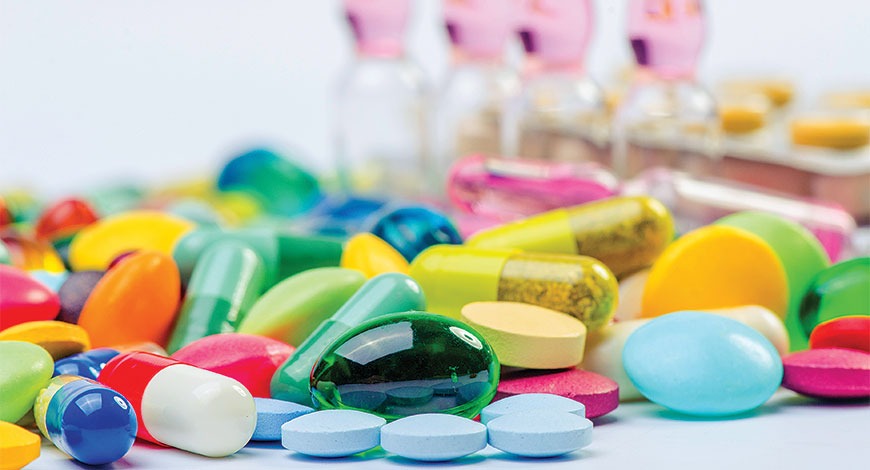دسته بندی نشده
Medicines Information
:Medicines Information
Medication: (Drug) In medical science, any substance that is used to treat, relieve symptoms, diagnose a disease or prevent it, and to affect the structure or function of the living organism, is said to correct body function after entering the body. In another definition, the drug is called a substance called a specific receptor inside, outside, or cell wall, which initiates or inhibits certain functions, and the strength of the drug is proportional to the amount and amount of the interaction. Of course, drugs that have localized effects, such as anti-acids and topical sterilizers and contrast agents, are not included in this definition.
The drug may have a natural origin (herbal or animal) or artificially prepared. Chemical drugs are usually found in the laboratory by physicians or pharmacists, and after sufficient research and approval of official authorities in pharmaceutical companies are produced.
Drug use may be oral (pill and syrup), fats (ointment and drops), inhalation (by breathing) or injections (ampoules). It’s called the pharmacy’s pharmacy. There are four drugs, mineral, animal, plant, or chemical.
Medications can also be classified into both authorized and unauthorized categories (such as some opiates).
Drugs should in principle be stored in special conditions and have a specific history of consumption. How to use the medicine and how to put it (dosage) into the doctor’s prescription. Some medicines used to give them Jalino medicines are also available in the pharmacy with a doctor’s prescription and a combination of several drug substances.
Types of pharmaceutical form:
Persian Name |
pharmaceutical form: |
Abbreviation |
| قرص | Tablet | Tab |
| کپسول | Capsule | Cap |
| آمپول | Ampoule | Amp |
| قطره | Drop | Drop |
| پماد | Ointment | Oint |
| شیاف | Suppository | Supp |
| شربت | Syrup | Syr |
| سرم | Injection Intravenous | |
| سوسپانسیون | Suspension | Susp |
| انفوزیون | Infusion | |
Medication Effect Mechanism:
Pharmacodynamics: A process in which the drug changes the physiology of the cell. (Describes what the medicine does on the body).
Pharmacokinetics: A study of the movement of drug molecules in the body. (Describing what the body does on the medicine).
1. Check how the drug enters the body (absorption).
2. Reaching the solution (Distribution).
3. Metabolism.
4. Excertion.
Drug Performance:
Therapeutic Effects:
The physiological response expected by the body to the drug.
For example: nitroglycerin lowers heart rate and increases myocardial hemorrhage.
A drug may have several therapeutic effects: aspirin (analgesic, anti-fever, anti-inflammatory and anticoagulant).
Undesirable effects:
– Side Effects: The unwanted and secondary effects of the drug that may cause injury or damage.
– (If the side effects of the medication are more than the therapeutic effects of the medication should be discontinued).
– Destructive Effects: Severe reactions to the drug.
– Accumulative Effect: Toxic Effects Following Long-term Use or Accumulation in the Blood Due to Disruption.
– Exposure or metabolism of large quantities of body that has lethal effects.
– (For example, toxic levels of morphine cause respiratory depression and death).
– Allergic Effects. – Abnormal and unpredictable effects (Idiosyncratic Effect).
Drug interactions:
Drug Interaction: When the drug has an effect on the mechanism of drug action.
1. Antagonist Effect
2. Synergistic Effect
Example: Cholesterol (in the treatment of hypercholesterolemia) reduces acetaminophen absorption and metoclopramide (anti-nausea) accelerates its absorption.
Timing of the dosage response:
Starting Effect: (Onset) When the medication takes its length, the medication returns after it arrives.
Maximum Response (Peak): When it takes time for the drug to reach its highest effective concentration.
Trough duration: (Trough) The minimum serum blood level of the drug just before receiving the next drug.
Duration: (Duration) Duration of the drug.
Half-time half-life: (Half Time) The median half-life of the drug when it reaches its peak in half.
Factors Affecting Drug Performance:
1. Growth factors and concerns: Older people, infants, pregnancy and lactation.
2. Weight.
3. Sex (change in fat, hormones).
4. Genetic and Cultural Factors: Differences in drug presentation in different ethnopedicine and ethnic groups.
5. Environments: A patient who receives a home remedy in an active and noisy environment can not fully utilize the benefits of that medication.
6. Psychological factors: expectations that patients have of drug effects. Placebo (inactive and inactive substance).
7. Time to take medicine: empty or full stomach.
How to prescribe medication:
<Edible: The easiest and most common method, its effect appears to be long lasting.
Sub Lingual sublanguage.
<Peripheral paths: Subcutaneous (SC) subcutaneous injection under the skin’s second layer.
Intramuscular intramuscular injection (intramuscular injection).
Intravenous (IV) Intravenous Intravenous Injection.
Intradermal intradermal intradermal injection under the epidermis.
Medication methods:
Metric System Metric System: The most extensive and easiest way.
Metric System or centimeters (length), grams or milligrams (weight) and cc or liters (volume).
* Weight:
1 kg = 1000 grams.
1 g = 1000 mg.
1 mg = 1000 micrograms.
* Liter:
1 liter = 1000 ml.
Clinical calculations: ordered dose
* Dose for administration = Amount available >< ————————-
Available dose
* Example: Amp Morphin 2mg / IV
* Available dose of morphine = 10mg / 1ml
* Dosage given = 2mg
2 mg
* 1ml = 0.2 ml >< ———–
Answer: 10 mg
Calculation of drug in children:
! Dosage given in Weight >< Baby weight = Dose for administration
Example: Amp Amylacin 5mg / kg. In a 14kg baby
Leg Saha: 14kg = 70 mg> <5mg / kg. ! Based on the body’s child’s surface (BSA)
Based on BSA, it is more accurate because it is based on weight and height (middle graph)
BSA Baby BSA / Adult> <Adult Dose = Child Dose
BSA adult: 1.7 square meters


